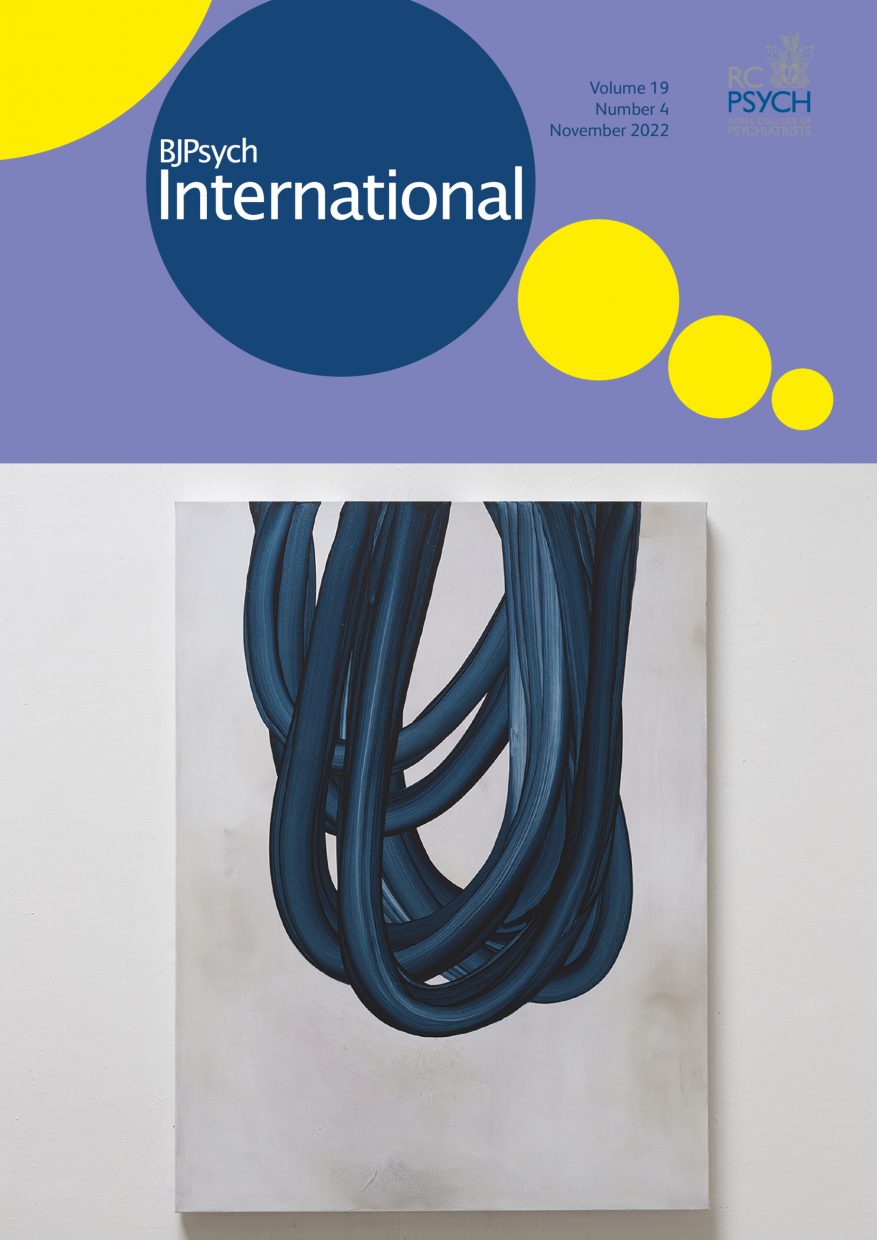Cover Artwork: ‘Medusa’ by Sarah Kogan
In the November edition of Muses – the arts blog from BJPsych International – Dr Tim McInerny, Pictures Editor, BJPsych International introduces Sarah Kogan, the artist whose portrait is on the cover of the November edition of BJPsych International.

Cover Artwork: ‘Medusa’ by Sarah Kogan
Copyright Sarah Kogan, 2022. Courtesy Karsten Schubert London.
Medusa (i) employs imagery which evokes both myth, as in the Medusan serpent motif, and a more ambiguous personal manifestation of the artist’s own relationship with symbolism. A tug on the string of our emotional and visceral links to a half-glimpsed world of memory and narrative, which is best articulated within a visual medium.
As in much of Kogan’s work there is a juxtaposition between two clear expressive vehicles: the materiality of paint, and how it reacts to manipulation and environment, and the subject matter’s ability to transport or transform us with suggestion and prompts, in the use of abstract shapes, tone, and colour.
To Kogan, the evolving nature of each piece, as they are created in real time within the studio, often creates a dynamic which defies a purely literal reading of what we are looking at. They are an expression of the physical world, both in terms of the internal and external workings of our own bodies and the landscapes in which we interact, whilst at the same time describing a more lyrical relationship with notions of myth, narrative, and place.
This work was executed on canvas in acrylic. it was painted flat on trestles allowing the artist to manoeuvre around the work, almost as if in a dance. A short brush was used to create the main motif, which is intentionally designed to fit within the hand, allowing Kogan the greatest level of manipulation and creating a clear connection between thematic motif and the pure physicality of the process. This enables Kogan to inhabit the works as they are created, as if in a living landscape. The background of the painting appears on first viewing to be a monotonal plane, however, on closer inspection, it is clearly made up of many thin layers (possibly as many as 20) of paint, which are sanded back to a glass-like surface and reveal the possibility of other shapes and tones, which have been imbedded in the ground. Kogan refers to these as ‘leaving her dirty fingerprints’ within the work. The image itself is painted in a translucent, fluid movement.
The implication of the Medusa series is that what we are presented with, within the plane of the canvas, is purely the tip of the iceberg. That above us there is an unseen presence, faceless and nameless, which may swing above our heads or entwine us in a trap.
Welcome to Muses – the arts blog from BJPsych International. Launched in March 2022, this new blog aims to highlight international art and artists, particularly from low-and-middle-income countries, with a focus on mental health. We welcome submissions for consideration, such as, comments on artwork, visual arts, literature, drama, films, podcasts, and videos. Do have a look at the instructions for blog authors for details on how to submit. General enquiries about the blog: BJPInternational@rcpsych.ac.uk
Professor David Skuse, Editor-in-Chief, BJPsych International






